The Winter Garden minus its palms
J. had given me a heads up that Brookfield was replacing the Winter Garden palm trees, and then Brookfield sent a press release, but it wasn’t until I saw N.’s shots — and walked over there myself — that I realized what a shocker it is to see the space minus the greenery.
The trees have grown too tall for their enclosure, and not for the first time. And while I mentioned it a few days ago, I thought a full post was worth it here. I had never thought much about those palms — always considered it kind of silly and gimmicky, really, to have palm trees in New York City — but the journey of the palms is pretty incredible. And I guess there really is no better tree for that space, since their leaves are only at the top.
And I had to also look back on the Winter Garden Atrium itself for those of us (me) who don’t remember its origins. It was built in 1988, along with the rest of the World Financial Center, and designed by the architect César Pelli. His wife, the noted landscape architect Diana Balmori, designed the interior of the atrium and placed the original palms. Among her many other credits is building the first rooftop garden on a residential building — at the Solaire. It’s worth reading her obit in The Times.
After 9/11, the atrium’s glass panels and interior were restored at a cost of $50 million (at that time there were also plans to remove the grand staircase, which no longer led to the pedestrian bridge crossing into the World Trade Center, but those were fought by local residents). And of course the palms were restored then, in 2002.
They were then replaced in 2013 by Brookfield’s landscapers, John Mini Distinctive Landscapes, when they had grown to about 60 feet. Turns out when palms are outside, their trunks are strengthened by wind and rain, but inside, their flexibility isn’t developed while they grow at a rate of about one to two feet a year. This dictates the requirement to replant once the trees reach 55’ to 60’ in height. (The atrium itself is 120 feet high.)
So that leads us to 2024, where the 11-year-old palms are now removed. John Mini and his suppliers have been prepping this new crop for city life over the past three years. They visited fields and fields of palm trees in southern Florida, searching for a group of Washingtonia palms with the right heights, aesthetics, health and age. Of those 2000, they then dug up a selection and brought them to the Pahokee Palms nursery, where the teams built a 48-foot “shade house” that allows tropical trees to transition to indoor environments with lower light intensity, quality and duration.
The old palms have now been removed and mulched, and part of that mulch will be added to the beds of the new trees, which will arrive this week. And the planting of the new trees will begin. The landscapers continue to monitor the trees for months following, discretely, at night. Stay tuned for the reveal.







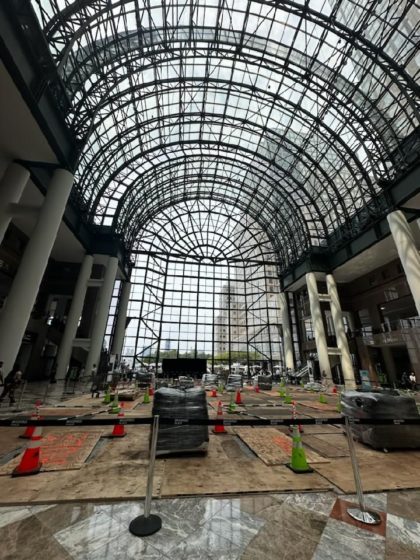
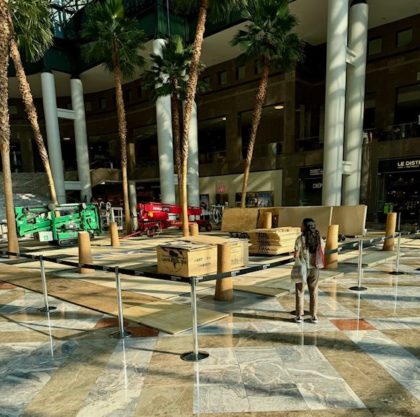
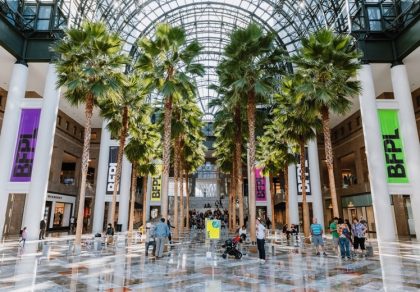
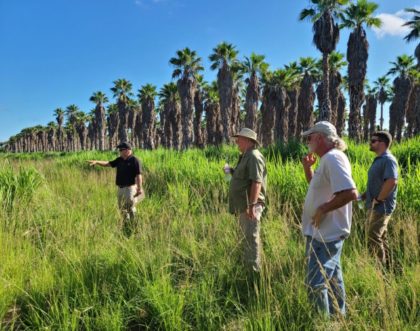
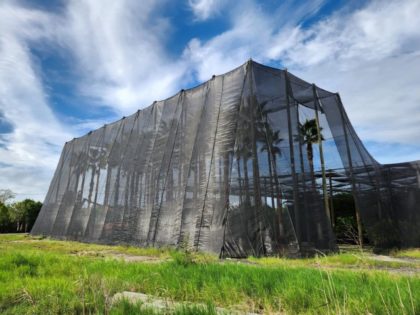
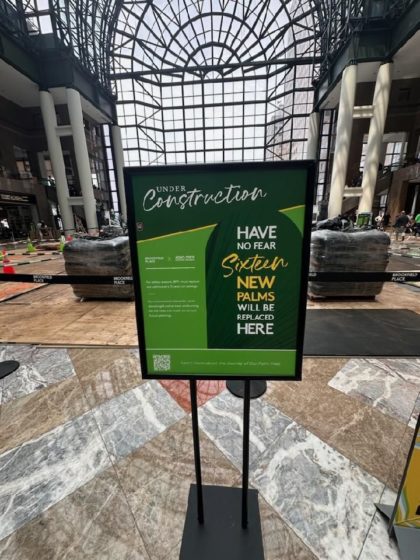






I think you mean it was built/finished in 1988.
You are correct 1988.
Sorry, typo.
I was one of the original tenants at Gateway Plaza and got one of the last available apartments. It was in the 500 building on the 2nd floor. My view was of the vast building site of the future World Financial Center (and the Hudson River). Though I only lived there a year, little did I know at the time, how much I would grow to love what became the Winter Garden and its Palms. At the time they were built, they were the largest indoor grove of palms in the world. They may still be and it remains an impressive sight to see.
Fascinating! I was always curious as to whether the palms were real trees or fake. Now I know.